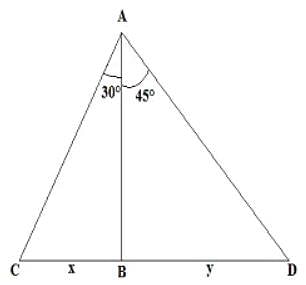BPSC TGT SST (Geography & Economics) Mock Test - 1 - Bihar PGT/TGT/PRT MCQ
30 Questions MCQ Test - BPSC TGT SST (Geography & Economics) Mock Test - 1
Read the following sentence and choose the correct options below.
Get some sweets _____ coffee for me.
Direction: Fill in the blanks with the correct form of simple past tense.
Q. It was a funny situation but nobody _______________. (laugh)
| 1 Crore+ students have signed up on EduRev. Have you? Download the App |
Direction: Choose the correct possessive pronoun.
Q. The house belongs to Rachit. It is _________.
सामिष
A is 25% less efficient than B. If A and B together can complete a work in 48 days, in how many days can A alone complete it?
'Ophthalmia' is related to 'Eye' in the same way as 'Rickets' is related to:
Directions: Each of the following consists of a question and two statements numbered I and II given below it. You have to decide whether the data provided in the statements are sufficient to answer the question.
Q. What is the rank of A from the top in a class of 23 students?
Statement I: A’s rank is five ranks below H's rank, whose rank is 19th from the bottom.
Statement II: A’s rank is seven ranks above F's rank, whose rank is 11th from the bottom.
The average of 31 numbers is 57. The average of the first 10 numbers is 50 and that of the last 20 numbers is 61. What is the 11th number?
The LCM of two numbers is 1920 and their HCF is 16. If one of the number is 128, find the other number.
A is 80% as efficient as B and 125% as efficient as C. If B can complete the work in 90 days, in how many days can C alone complete the work?
The journalist who refused to accept ‘Padma Bhushan’ was?
A wooden block weighs 10 N in air and 6 N in water. What is the buoyant force acting on the block?
Two boats are spotted on the two sides of a light house. If the angle of depression made by both the boats from top of the lighthouse is 30° and 45° and the height of the light house is 125 m then find the distance between the two boats.
Who was the 24th and last Tirthankar in Jainism?
______ measure the distance north and south of the Equator
A few factors affecting the location of industries are given below. Complete the list, by choosing the one that can be added to this list .
A sketch is a ______ mainly based on memory and not to the ____.
During the south west monsoon period the moisture laden winds blow from
Which continent is bounded by water bodies on three sides?
The time of the day just before sunrise is known as
The movement of people in and out of an area is referred to as
Currency is issued in India by :
The service sector includes activities such as






























